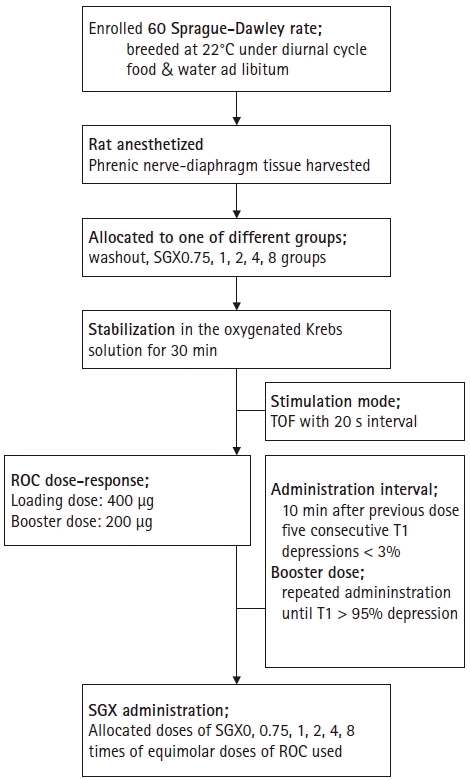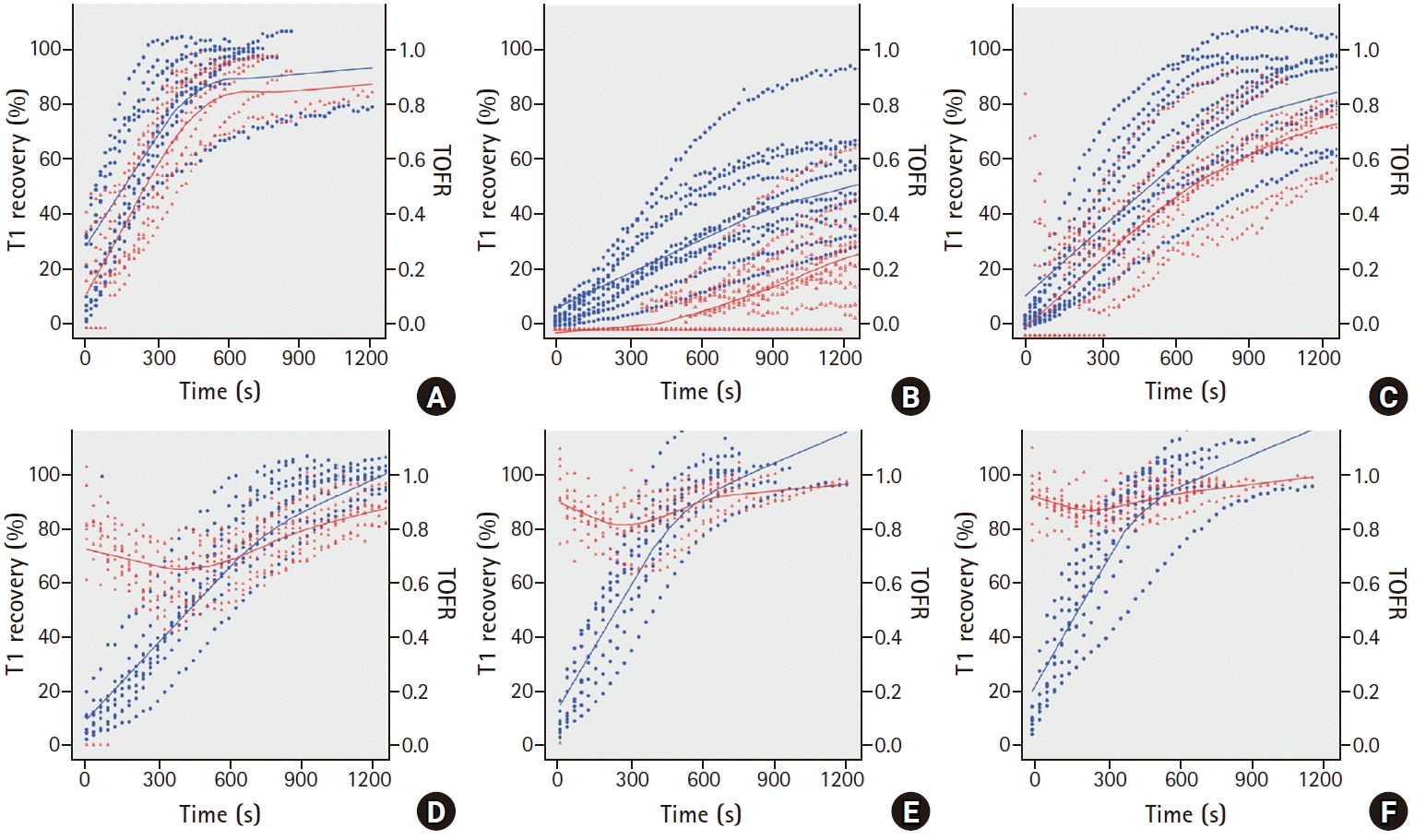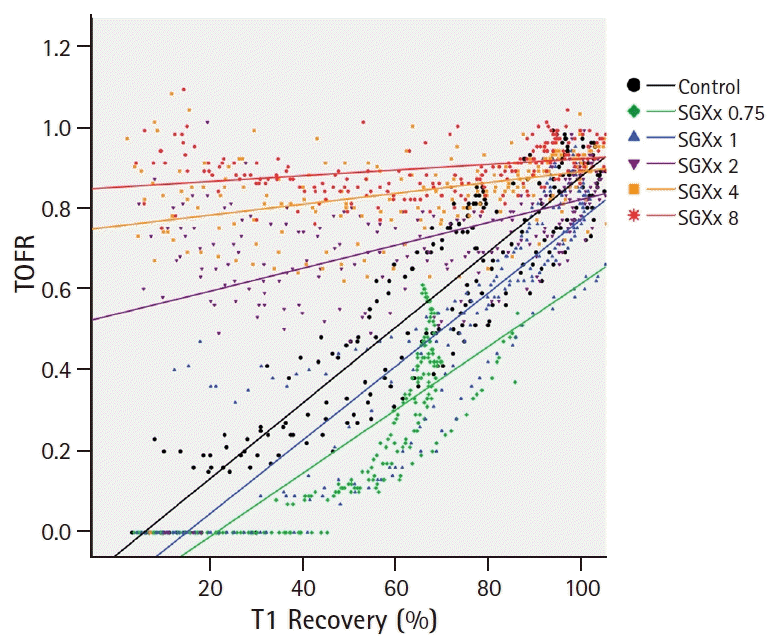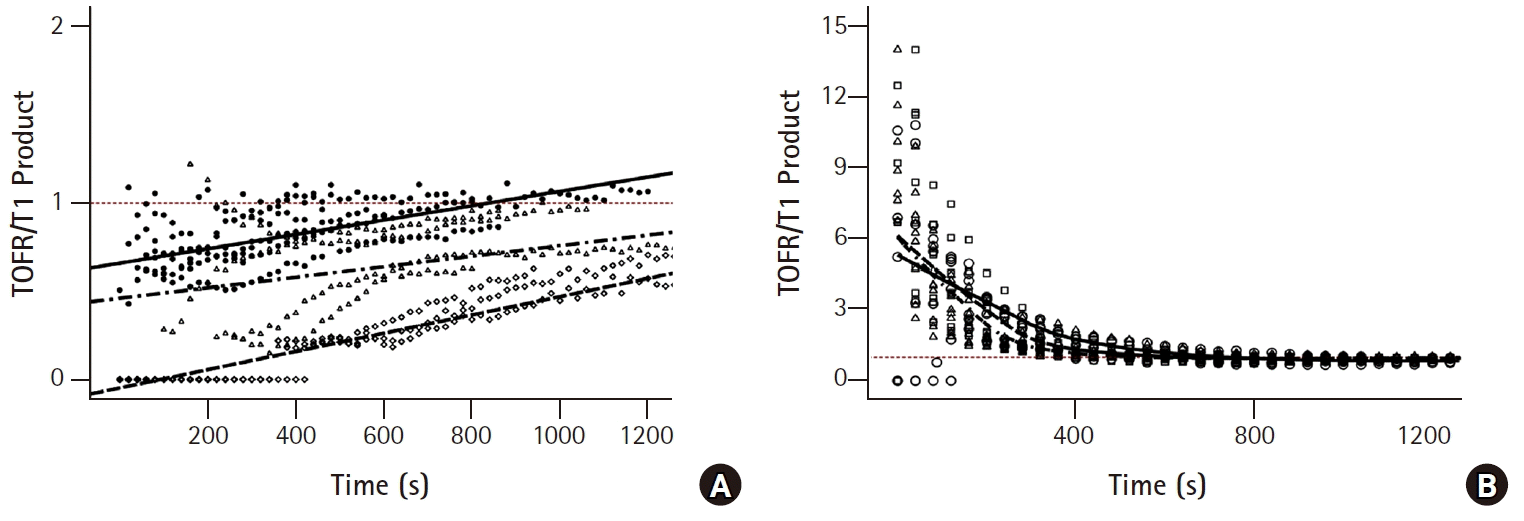1. Murphy GS, DeBoer HD, Eriksson LI, Miller RD. Reversal (Antagonism) of neuromuscular blockade. In: Miller’s Anesthsia. 8th ed. In : Miller RD, editor. Philadelphia: Churchill Livingstone;2015. p. 995–1027.
2. Viby-Mogensen J. Neuromuscular monitoring. In: Miller’s Anesthesia. 8th ed. In : Miller RD, editor. Philadelphia: Churchill Livingstone;2015. p. 1604–20.
3. Wessler I. Control of transmitter release from the motor nerve by presynaptic nicotinic and muscarinic autoreceptors. Trends Pharmacol Sci. 1989; 10:110–4.

4. Morris RB, Cronnelly R, Miller RD, Stanski DR, Fahey MR. Pharmacokinetics of edrophonium and neostigmine when antagonizing d-tubocurarineneuromuscular blockade in man. Anesthesiology. 1981; 54:399–401.
5. Donati F, McCarroll SM, Antzaka C, McCready D, Bevan DR. Dose-response curves for edrophonium, neostigmine, and pyridostigmine after pancuronium and d-tubocurarine. Anesthesiology. 1987; 66:471–476.

6. Beny K, Piriou V, Dussart C, Hénaine R, Aulagner G, Armoiry X. Impact of sugammadex on neuromuscular blocking agents use: a multicentricpharmaco-epidemiologic study in French university hospital and military hospitals. Ann Fr AnesthReanim. 2013; 32:838–43.
7. Bom A, Bradley M, Cameron K, Clark JK, Van Egmond J, Feilden H, et al. A novel concept of reversing neuromuscular block: chemical encapsulation of rocuronium bromide by a cyclodextrin-based synthetic host. Angew Chem Int Ed Engl. 2002; 41:266–70.

8. Vieira Carlos R, Luis Abramides Torres M, de Boer HD. Train-of-four recovery precedes twitch recovery during reversal with sugammadex in pediatric patients: a retrospective analysis. Paediatr Anaesth. 2018; 28:342–46.

9. Kim KS, Oh YN, Kim TY, Oh SY, Sin YH. Relationship between first-twitch depression and train-of-four ratio during sugammadex reversal of rocuronium-induced neuromuscular blockade. Korean J Anesthesiol. 2016; 69:239–43.

10. Staals LM, Driessen JJ, Van Egmond J, de Boer HD, Klimek M, Flockton EA et al. Train-of-four ratio recovery often precedes twitch recovery when neuromuscular block is reversed by sugammadex. Acta Anaesthesiol Scand. 2011; 55:700–7.

11. Lee C. Structure, conformation, and action of neuromuscular blocking drugs. Br J Anaesth. 2001; 87:755–69.
12. Tomàs J, Santafé MM, Garcia N, Lanuza MA, Tomàs M, Besalduch N, et al. Presynaptic membrane receptors in acetylcholine release modulation in the neuromuscular synapse. J Neurosci Res. 2014; 92:543–54.

13. Parnas SH, Parnas I. Presynaptic effects of muscarine on ACh release at the frog neuromuscular junction. J Physiol. 1999; 514:769–82.
14. Jonsson M, Gurley D, Dabrowski M, Larsson O, Johnson EC, Eriksson LI. Distinct pharmacologic properties of neuromuscular blocking agents on human neuronal nicotinic acetylcholine receptors: a possible explanation for the train-of-four fade. Anesthesiology. 2006; 105:521–33.
15. Faria M, Oliveira L, Timoteo MA, Lobo MG, Correia-De-Sa P. Blockade of neuronal facilitatory nicotinic receptors containing α3β2 subunits contribute to tetanic fade in the rat isolated diaphragm. Synapse. 2003; 49:77–88.

16. Nagashima M, Sasakawa T, Schaller SJ, Martyn AJ. Block of postjunctional muscle-type acetylcholine receptors in vivo cause train-of four fade in mice. Br J Anaesth. 2015; 115:122–7.
17. Harvey SC, Leutje CW. Deteriminants of competitive antagonist sensitivity on neuronal nicotinic receptor β subunits. J Neurosci. 1996; 16:3798–806.
18. Su PC, Su WH, Rosen AD. Pre- and postsynaptic effects of pancuronium at the neuromuscular junction of the mouse. Anesthesiology. 1979; 50:199–204.

19. Pavoni V, Gianesello L, De Scisciolo G, Provvedi E, Horton D, Barbagli R, et al. Reversal of profound and “deep” residual rocuronium-induced neuromuscular blockade by sugammadex: a neurophysiological study. Minerva Anesthesiol. 2012; 78:542–9.
20. Woo T, Kim KS, Shim YH, Kim MK, Yoon SM, Lim YJ, et al. Sugammadex versus neostigmine reversal of moderate rocuronium-induced neuromuscular blockade in Korean patients. Korean J Anesthesiol. 2013; 65:501–7.

21. Fuches-Buder T, Meistelman C, Raft J. Sugammadex: clinical development and practical use. Korean J Anesthesiol. 2013; 65:495–500.

22. Jones RK, Caldwell JE, Brull SJ, Soto RG. Reversal of profound rocuronium-induced blockade with sugammadex. A randomized comparison with neostigmine. Anesthesiology. 2008; 109:816–24.
23. Benoit P, Debaene B, Donati F, Marty J. Residual paralysis after emergence from anesthesia. Anesthesiology. 2010; 112:1013–22.
24. Kotake Y, Ochiai R, Suzuki T, Ogawa S, Takagi S, Ozaki M, et al. Reversal with sugammadex in the absence of monitoring did not preclude residual neuromuscular block. AnesthAnalg. 2013; 117:345–51.









 PDF
PDF Citation
Citation Print
Print



 XML Download
XML Download